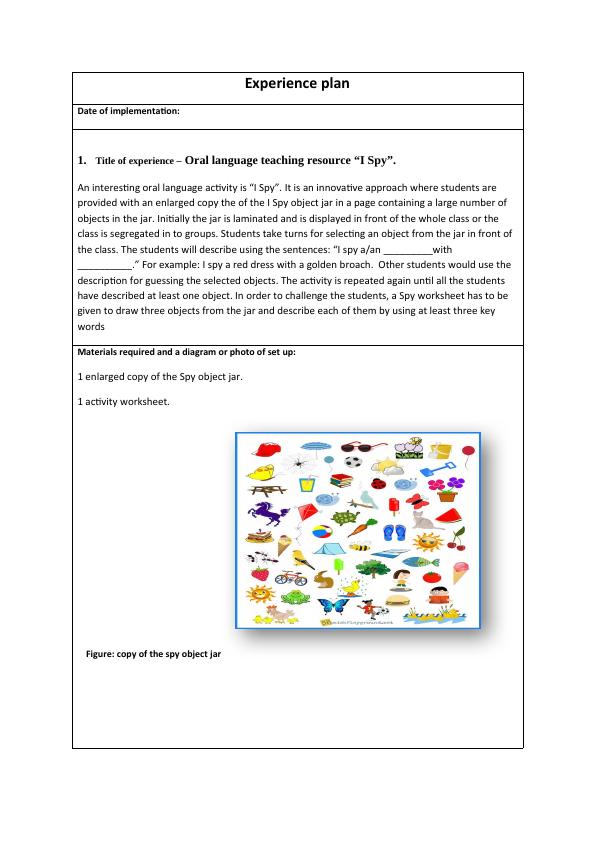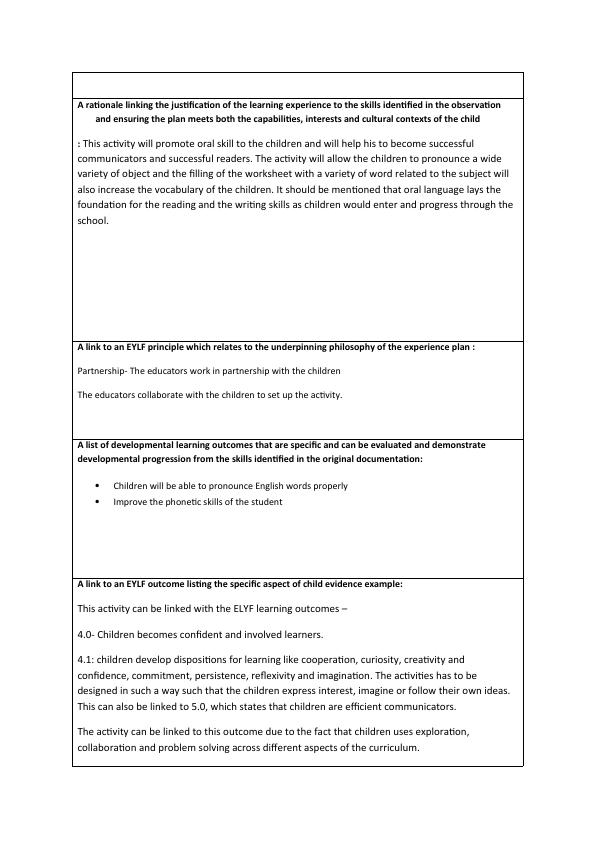Oral Language Teaching Resource: I Spy
4 Pages897 Words83 Views
Added on 2023-01-20
About This Document
This document provides a plan for an oral language teaching resource called 'I Spy'. The activity involves students describing objects from a jar and guessing the objects based on the descriptions. The plan includes materials required, rationale, learning outcomes, teaching strategies, and evaluation.
Oral Language Teaching Resource: I Spy
Added on 2023-01-20
ShareRelated Documents
End of preview
Want to access all the pages? Upload your documents or become a member.
Writing Teaching Resources
|4
|902
|50
Writing Teaching Resources
|3
|537
|47
Early Childhood Education and Care
|10
|1605
|201
Storytelling Teaching Resources
|4
|918
|53
Experience Plan Template for Early Childhood Education | Desklib
|10
|2531
|260
Plan for Babies: Slow Version of Shell Game and Plan for Toddlers: Sorting Shapes
|7
|1562
|483


